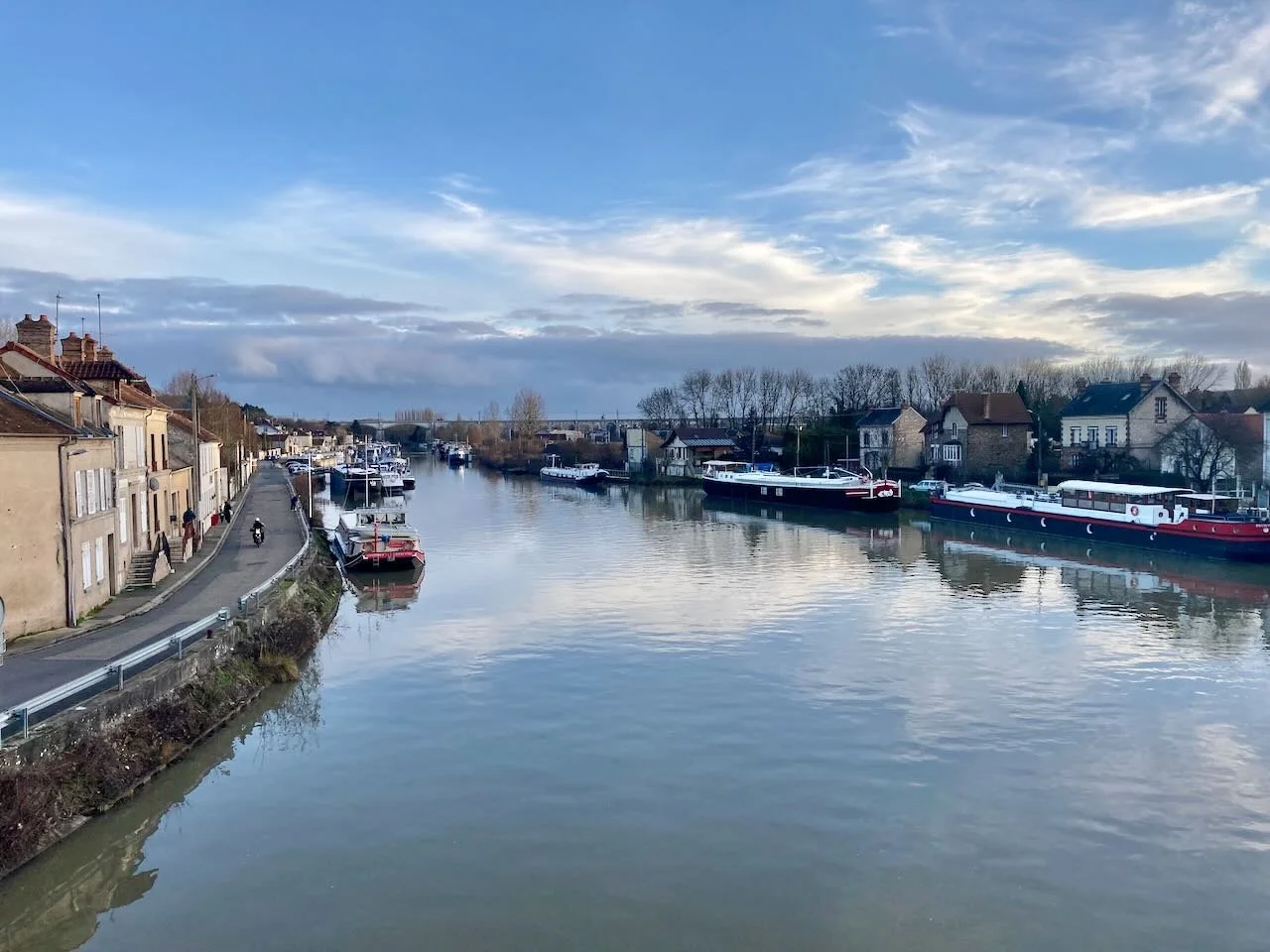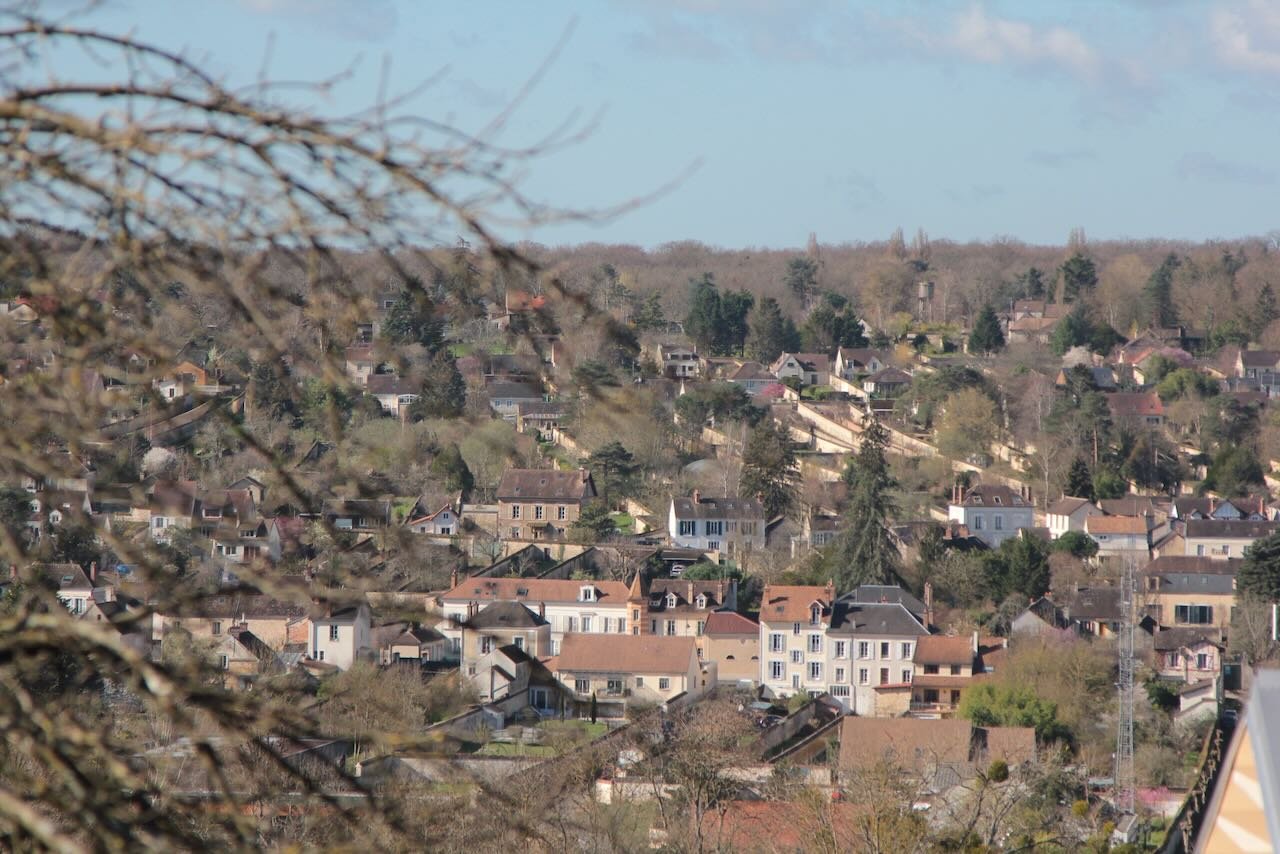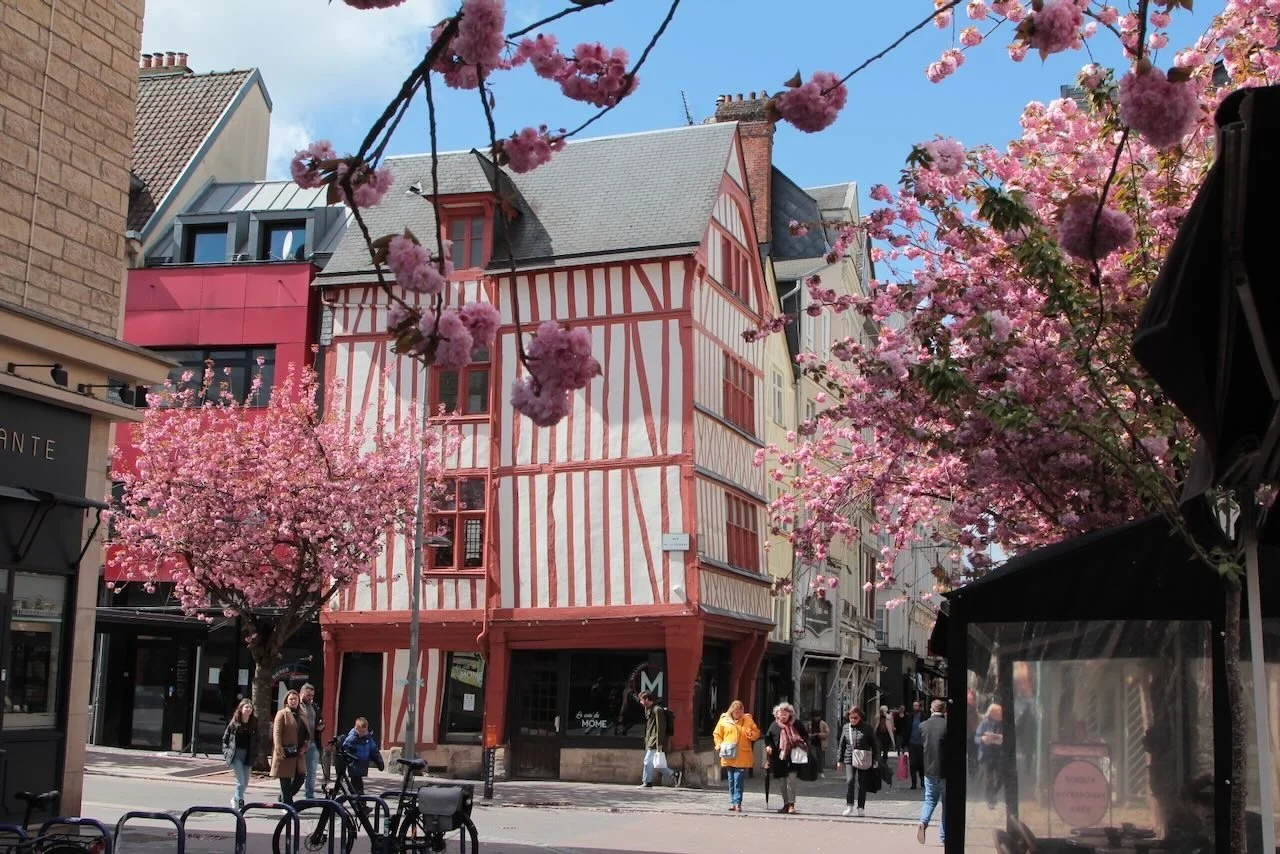The arty villages along the Seine and Loing near Fontainebleau
Artists, musicians and writers have long been attracted to the villages that cluster along the Seine and its tributary, the Loing, downstream from Paris around Fontainebleau. With their ancient houses made of warm beige stones clustered around shady squares overlooked by a church tower, these picturesque villages have managed to maintain much of their charm… once you’ve got past the hideous modern housing developments that ruin their outskirts!
GREZ-SUR-LOING
For some odd reason it was Scandinavian, Irish and Japanese artists who were drawn to Grez-sur-Loing in the XIXth century. This charming, small (basically one-street) village lies 10kms south of Fontainebleau. It has a lovely, if largely reconstructed, XIIth century bridge that arches over the Loing, dominated by the XIth century ruins of the Ganne tower. The bridge is a popular jumping-off spot for youngsters in the summer although swimming in the Loing is officially forbidden because there are no life-guards. But the meadow on the right bank (east) just to the left of the bridge is such an obvious place to put your towel down, have a picnic, play volleyball. A grassy beach!
Portraits of the artists decorate the houses they occupied whilst the mairie (town hall) just beyond the church doubles up as a small, free museum exhibiting works donated by the artists who lived in the village.
MORET-SUR-LOING
Impressionist artist Alfred Sisley settled in Moret-sur-Loing (officially called Moret-Loing-et-Orvanne since January 1, 2017 but I’ve never heard anyone use that unwieldy name!), anointed by Radio France in 2019 “the most beautiful town in the Ile de France”. This royal city, once on the border between the Kingdom of France and the Duchy of Burgundy, was shaped along the west bank of the Loing between 1108 and 1223 by Louis VI, his son Louis VII the Younger and his grandson Philippe II Auguste. It was the latter who made the city a stronghold and surrounded it with a belt of ramparts, part of which still remains.
Access to the town is still guarded by two magnificent square gate-towers: to the west the Samois Gate (the Porte de Samois, originally called the Paris Gate) and to the east the Burgundy Gate, or Porte de Bourgogne.
The 12th century keep, registered as an historic monument in 1926, is one of the two buildings which dominate the sky-line, the other being the church. The castle keep, which was in ruins, was purchased in 1880 by the Thirion family who undertook to restore it and who still own it today. Popular with film directors and photographers, it’s nevertheless closed to the public. The only way to see it is either to stay there (there are two guest rooms), or to hold a reception or a more intimate lunch, dinner, or children's tea-party!
The Notre-Dame-de-la-Nativité church is a major work of Gothic architecture whose choir was inspired by the one in Notre-Dame Cathedral in Paris. It houses a beautiful Renaissance organ, one of the oldest in France. Across from the church, in an old half-timbered building, there’s a small shop where you can buy a legendary sweet: Sucre d'Orge (barley sugar), the oldest candy in France, invented here in 1638 by the Benedictine Sisters of Notre-Dame-des-Anges and whose recipe is still secret. Nuns stopped making the treat in 1972 but it continues to be made in Moret using the 17th century recipe, with no colouring or flavouring agents.
The best view of Moret-sur-Loing, and the one oft painted by Sisley, is from the east bank of the Loing: in the foreground, the Loing, then the medieval bridge which spans the river, resting on two islets on which stand two ancient tan mills (one of which is used by the town’s sculpture club and the other regularly hosts exhibitions). In the background the castle keep is on the left, the church in the centre and the houses overlooking the river are strung out to the left and right. In the park on this bank (and in various other places dotted around the town) there are coloured panels showing you the views that Sisley painted from that very spot. Fortunately the views today are almost identical!
SAINT-MAMMÈS
You can continue following in the artist's footsteps by meandering down either of the towpaths on each bank of the Loing for just 1km to Saint-Mammès, a river port whose importance lies in its strategic position at the confluence of the Loing and the Seine. The port has experienced all modes of shipping: from boats being pulled along by humans and/or animals to motorized barges, shipping using the current, mechanical traction and steam towing. Thirty years ago when I first moved to this region Saint-Mammès was a sad village, down-at-heel, reflecting the stagnation of the inland waterway industry. But in 2000 a beautiful river port house was built, a starting point for discovering the Loing, Briare, Nivernais or Burgundy canals as well as pleasant navigation on the Yonne and the Seine.
Consequently, the quays, also often depicted by Sisley, have been developed, the houses restored, tourist routes inaugurated: for art enthusiasts, the “Sisley” orientation tables allow you to stand where the painter stood to sketch the landscape.
CHAMPAGNE-SUR-SEINE
From Saint-Mammès we follow the Seine downstream as it takes a sharp turn northwards. In the loop thus produced nestles Champagne-sur-Seine. This former wine-producing village (despite its name the famous bubbly beverage has never been produced here) became an industrial town in the XXth century. Some 256 families were moved here from Le Creusot in central France by the Schneider company in 1900 to work in the factory. Twenty years later some 30 Russian families, fleeing the Bolshevik revolution, also found work at the factory. They wanted a place of worship so built a tiny Orthodox church between 1938-39 on a hillside overlooking the river. Notre-Dame-de-Toutes-les-Protections is today a small museum which was bequeathed to the city after the last Russians left in 1982.
THOMERY
On the opposite bank is Thomery and the Château de By which houses the Rosa Bonheur museum which I’ll tell you more about in another post. Thomery also has a tiny river port, Efffondré, built under the reign of Philippe II Auguste (1180-1223) for the transport of Fontainebleau sandstone and, later, of the Chasselas grapes which made the village famous. Until the middle of the XIXth century, Chasselas de Thomery, a luxury product shipped to Russia, was cultivated along more than 300km of stone walls, 2.15m high, spaced 8m to 10m apart so as not to cast shadows on each other and oriented east-west so that one side faces due south. These walls are today classified as historic monuments; an aerial view clearly shows how much they shaped the town. Visitors can circulate between a section of these walls along the Chemin des Longs Sillons down to Efffondré.
The bunches of grapes were kept in grape chambers. In 1848 winegrower Baptiste Larpenteur invented a new “fresh stalk” or “green stalk” method of preserving the fruit: instead of simply lying the Chasselas on fern-lined shelves, he pushed the stalks into zinc pipes filled with water. The pipes were inclined thus allowing the Chasselas to hang freely and the stalk to stay humid. The process was perfected in 1865 by replacing the zinc pipe with wooden shelves pierced with holes into which small glass vials were pushed at an angle. These were filled with water and a pinch of charcoal and the grape stalk placed inside. This way the Chasselas stayed fresh for six months!
HÉRICY
A few kilometres downstream from Thomery one reaches Vulaines where the poet Stéphane Mallarmé had his holiday home on the banks of the Seine. Today it is a museum. Adjoining Vulaines, the small town of Héricy started life in the Gallo-Roman era when the Nautes Senons built warehouses to serve their port in Samois, on the other side of the river, the busiest between Sens and Lutèce (Paris). Tradition has it that Saint Geneviève spent some time in Héricy in about 451 to get provisions of food which she sent to the Lutecians (Parisians) being besieged by the Huns.
In the XIth century, monks came bringing with them their knowledge of agriculture and viniculture which made the region rich. The Cistercians built the Barbeau Abbey here where Louis VII lived and where he was buried in 1180. Unfortunately, this abbey, one of the most beautiful in France, was badly damaged during the Revolution and then demolished in 1837. The dimensions of Hericy’s Sainte Geneviève church with its XIIIth century bell tower testify to the importance of the ancient city with its 5,000 inhabitants (compared to 2,600 today). The church’s stained glass window from 1525 is classified as an historic monument. The town's only castle, built at the end of the XVIIth century by the General of the Swiss Guards, Pierre Alexandre Stoppa, still exists. Today it’s the Town Hall!
SAMOIS-SUR-SEINE
Samois-sur-Seine, opposite Héricy, was adopted by musicians: Maurice Ravel, Claude Débussy and gypsy jazz guitarist Django Reinhardt. A four-day annual jazz festival in the latter’s honour was held for 36 years on the Île du Berceau, linked to the village by a couple of pedestrian bridges, until the 2016 floods forced a move to the Fontainebleau Palace grounds, where the festival has been held ever since.
WHY THE SEINE SHOULD BE THE YONNE
Did you know, by the way, that the Seine should actually be called the Yonne because at the confluence of the two rivers in Montereau-Fault-Yonne just 11kms east of Saint-Mammès, the Yonne’s flow at 93m3 per second is greater than the 80m3 per second of the Seine, so it’s actually the Seine that is a confluent of the Yonne and not the other way around! But apparently the Gallic druids believed the Seine to be sacred and so superior to the others and then when the Romans arrived they elevated the river Sequana (Seine) to the rank of a deity. So the poor old Yonne never had a chance!
























